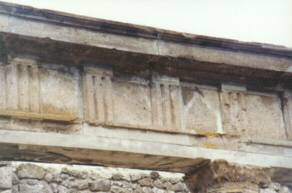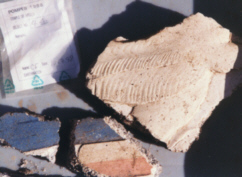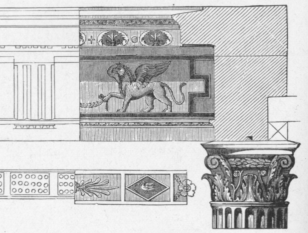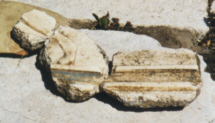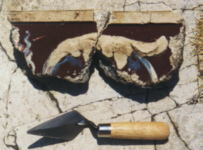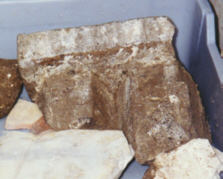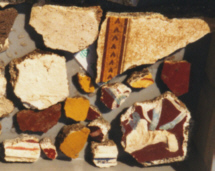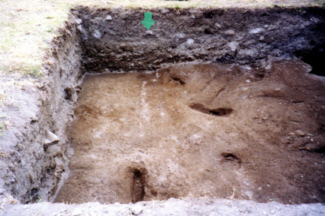|
|
What is an entablature? The photo at left shows several entablature blocks in position atop some portico columns. The photo at right is a close-up view. As shown in the illustration below from A. Mau (based on the Mazois drawings), the decorated frieze was attached to this surface. Note the underlying triglyph pattern (three vertical bars) in the photo and the drawing. |
|
||
|
The white fragment shows a griffin's wing. |
|
The fragments above clearly match the griffin's foot in the drawing. |
||
|
|
|
|
||
|
The photos left and right above show the many different designs on the frieze fragments. The center photo, a triglyph fragment, adds very strong physical evidence that the fragments are from the entablature. |
||||

